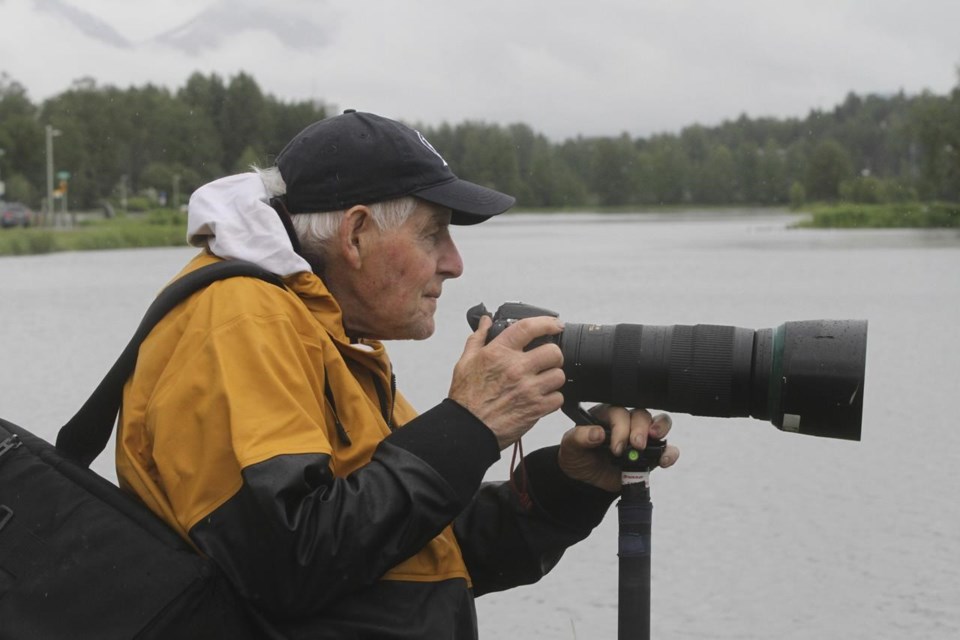ANCHORAGE, Alaska (AP) — Alaska is off to the slowest start of a wildfire season in three decades -- an immense relief one year after fires scorched nearly enough land to cover Connecticut and even threatened remote Alaska Native communities on the tundra.
Thanks to a cool, wet summer, wildfires so far this year have burned just 1 1/2 times the size of New York’s Central Park.
“If you were to kind of draw up a recipe for what would be a benign fire season in Alaska, we really have really checked all those boxes just this summer so far,” said Brian Brettschneider, a climate scientist with the National Weather Service.
It's a far cry from last year, when the state burned in ways rarely or never seen.
A lightning strike in the Yukon-Kuskokwim Delta in southwest Alaska, a region primarily made up of tundra, threatened two Alaska Native villages with about 700 total residents before firefighters put it out. Smoke from a fire that prompted a three-week evacuation for a subdivision in the community of Anderson blanketed Denali National Park and Preserve, one of the state’s premiere tourist destinations.
One home was destroyed in that fire and several seasonal cabins were lost. The only fatality in last year’s fires came when a helicopter pilot moving equipment to support firefighters died in a crash.
In all, last year's fires consumed 4,844 square miles (12,545 square kilometers) — just slightly less than the size of Connecticut. Of course, Alaska is huge; Connecticut could fit within it 118 times, according to the tourism website alaska.org.
This season's favorable weather is thanks to an upper level trough of low pressure over the Bering Sea and western Alaska. It’s bringing cooler air, promoting cloud cover and encouraging the arrival of moisture from the Gulf of Alaska, which helps keep plants from drying out, Brettschneider said.
Firefighters hired by state and federal agencies are not sitting around lamenting they have no fires to fight, said Sam Harrel, a spokesperson for the Alaska Division of Forestry. The state is using money from the infrastructure bill to remove fuels to prevent future fires, he said.
Alaska has also sent about 100 firefighters to help battle wildfires engulfing neighboring Canada.
The one drawback to the cooler, wetter summer is that some Alaskans are missing out on what is traditionally a short summer season. Eberhard Brunner, an 85-year-old photographer from Anchorage, wore a raincoat as he captured images of geese at the city's Westchester Lagoon on Thursday.
“It should be nice and should be sunny, in the 70s,” Brunner said. “If the weather keeps me home, I’ll never be able to get out."
Naomi Reupena-Tuaiao, a Honolulu native working in downtown Anchorage on her summer break from college in Nebraska, wishes it was just a little warmer.
“It’s just cold,” she said from under a large red umbrella. She had been standing outside in the rain for about seven hours, directing tourists to a trolley. Her shoes were wet and she was wearing two jackets.
Anchorage has only gone above 70 degrees F (21.1 degrees C) once this year.
Even though conditions favor the low fire season now, Brettschneider said that could quickly change.
The state is still about 10 days away from the historical peak for lightning season — last year, an astounding 61,000 lightning strikes were recorded from July 5-11 — and it only takes a few days of sunny, breezy, dry weather to provide fuel for wildfires.
“Things can change on a dime, but so far, so good,” he said.
The fire season generally concludes in Alaska at the end of August.
Mark Thiessen, The Associated Press



